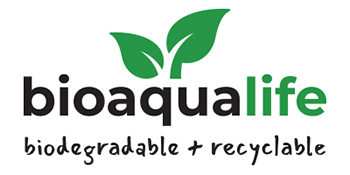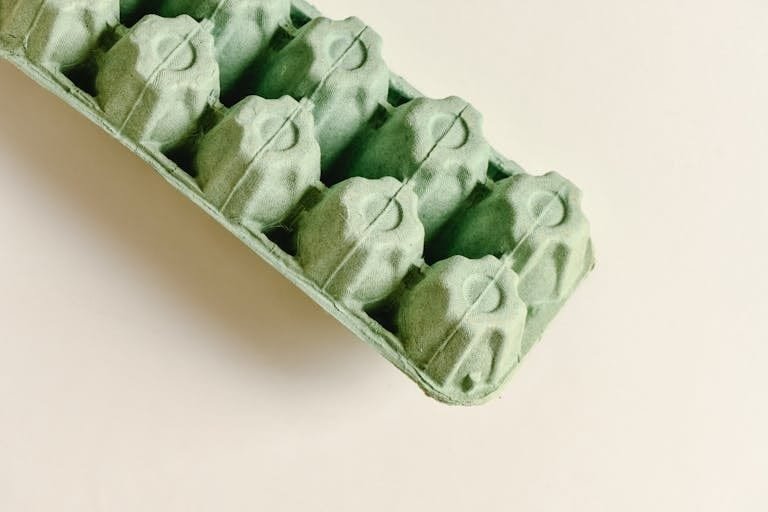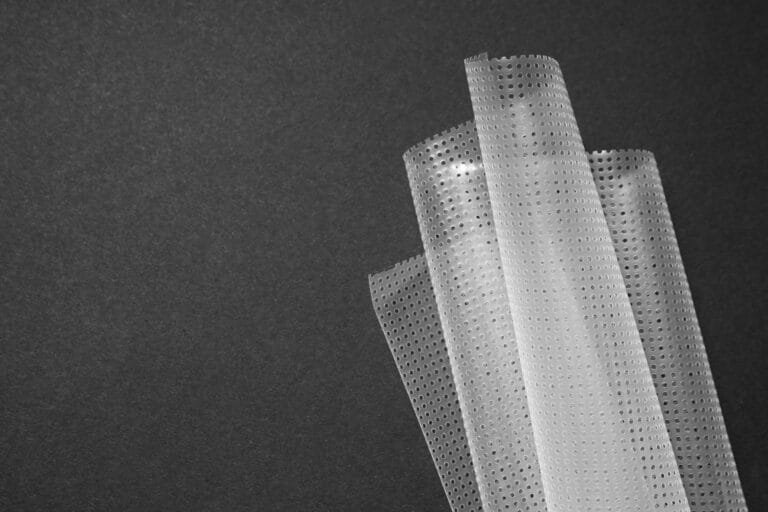Introduction
Boat owners and enthusiasts are increasingly recognizing the need for sustainable practices in the boating industry. One area gaining attention is the use of biodegradable shrinkwrap for boats, a more environmentally friendly alternative to traditional shrinkwrap materials. This article aims to provide an introduction to biodegradable shrinkwrap, emphasizing its environmental benefits compared to conventional materials. We’ll delve into its role in winterization, the manufacturing process, and explore the crucial distinction between biodegradability in degradation in landfill and marine environments. Additionally, we’ll examine the impact of microplastics generated during degradation and offer insights into choosing and applying biodegradable shrinkwrap. Finally, we’ll explore future trends and innovations shaping the sustainable boating landscape.
Understanding Biodegradable Shrink Wrap
Definition and Composition
Biodegradable shrinkwrap is a type of protective covering for boats made from materials that can break down naturally over time. Unlike traditional shrinkwrap, which often contributes to environmental pollution, biodegradable options aim to minimize the ecological footprint associated with boat maintenance and manufacturer delivery.
The materials used in biodegradable shrinkwrap typically include a blend of organic polymer additives, such as in the case of bioaqualife, , that are designed to decompose through natural landfill processes. These materials are carefully selected to balance the need for durability during use with the ability to break down after their intended lifespan only under landfill conditions.
Oxygen-dependent biodegradable (oxy-biodegradable) films, while designed to break down under specific environmental conditions, may not be the optimal choice for landfills. These films typically require the presence of oxygen to facilitate the biodegradation process effectively. In landfill settings, where oxygen levels are often limited due to compacted waste and anaerobic (no oxygen) conditions, the breakdown of oxygen-dependent biodegradable films can be hindered.
Consequently, this can lead to incomplete decomposition, prolonged persistence, and the potential release of microplastics into the environment. Microplastics, resulting from the breakdown of these materials, present a concern for soil and water contamination, posing risks to ecosystems and wildlife. That is why, the use of oxygen-dependent biodegradable films in landfills may not align with the goal of minimizing environmental impact, emphasizing the importance of choosing shrinkwrap materials that can degrade efficiently under diverse waste management conditions.
Manufacturing Process
The manufacturing process of biodegradable shrinkwrap involves sourcing and blending the selected materials, creating a film that meets the necessary strength and flexibility requirements for effective boat protection. This process typically involves fewer environmentally harmful chemicals compared to the production of traditional shrinkwrap materials when biodegraded in landfill settings. bioaqualife’s biowrap biodegradable films are formulated with a proprietary ingredient that attracts landfill bacteria to consume the product and turn it into soil and digestive gases.
The use of renewable resources in biodegradable shrinkwrap contributes to a more sustainable lifecycle, reducing the reliance on non-renewable fossil fuels. As the demand for environmentally conscious alternatives increases, manufacturers are investing in research and development to enhance the performance and affordability of biodegradable materials.
Environmental Benefits
Reduction of Plastic Pollution
One of the primary advantages of biodegradable shrinkwrap is its potential to reduce plastic pollution significantly. As outlined in the Forbes article The Plastic Alternative The World Needs by Alex Zang at Columbia Business School – the Eugene Lang Entrepreneurship Center, the world is looking for plastics that meet the world’s need for biodegradability. Traditional shrinkwrap, primarily made from polyethylene, poses a significant environmental threat due to its non-biodegradable nature. Discarded or improperly disposed of shrinkwrap can accumulate in landfills, water bodies, and natural habitats, contributing to the global plastic pollution crisis.
Biodegradable shrinkwrap, on the other hand, breaks down naturally over time, reducing the long-term environmental impact. As the marine industry embraces more sustainable practices, the adoption of biodegradable materials becomes a crucial step in mitigating plastic pollution in waterways.
Lower Carbon Footprint
The production of traditional shrinkwrap materials often involves energy-intensive processes and the use of fossil fuels.
In contrast, biodegradable shrinkwrap manufacturing tends to have a lower carbon footprint. The incorporation of renewable resources and eco-friendly production methods contributes to a more sustainable product lifecycle.
The use of biodegradable materials aligns with the broader goal of reducing carbon emissions and minimizing the environmental impact of boating activities. Boat owners can make a positive contribution to climate change mitigation by opting for shrinkwrap solutions that prioritize sustainability.
Positive Impact on Marine Ecosystems
Boating activities, including the use of traditional shrinkwrap, can have unintended consequences on marine ecosystems. Improper disposal of non-biodegradable materials can lead to overfilling of landfills and contamination of water bodies, affecting both land and aquatic life and habitats. Biodegradable shrinkwrap offers a solution that minimizes harm to land and marine environments.
As true biodegradable materials break down, they introduce fewer harmful substances into the water. This can be particularly important in marinas and boatyards, where the concentration of boat-related pollutants can be high. By choosing biodegradable shrinkwrap, boaters contribute to preserving the diverse ecosystems that thrive in and around waterways.

Winterization with Biodegradable Shrinkwrap
Traditional Shrinkwrap Use in Winterization
Winterization is a crucial aspect of boat maintenance, especially in regions where cold temperatures can lead to freezing and other potential damage. Traditional shrinkwrap has been widely used for winterization purposes due to its ability to create a protective barrier against harsh weather conditions.
However, the environmental impact of traditional shrinkwrap has raised concerns within the boating community. The disposal of used shrink wrap, often contaminated with residues from the boat and the environment, poses challenges in terms of recycling and contributes to the accumulation of non-biodegradable waste.
Advantages of Biodegradable Shrinkwrap
Biodegradable shrinkwrap addresses the environmental drawbacks associated with traditional materials while providing effective winterization for boats. Boat owners can enjoy the benefits of a protective covering without compromising their commitment to sustainability.
The advantages of using biodegradable shrinkwrap for winterization include:
- Reduced Environmental Impact: Biodegradable materials break down naturally, reducing the long-term impact on landfills and ecosystems.
- Ease of Disposal: Disposing of biodegradable shrinkwrap is often more straightforward than traditional materials. Some options can even be composted under specific conditions.
- Reduced expenses for landfills: Landfill volume reduction is a key consideration in many communities
- Equal or Superior Performance: bioaqualife biowrap maintains or exceeds industry standards for boat wrap
- Recyclable: bioaqualife biowrap are also recyclable
Decomposition in Landfill Settings
When evaluating the environmental impact of shrinkwrap materials, understanding the biodegradability in landfill settings is crucial. bioaqualife films excel in this aspect, offering a preferred solution for boat owners seeking sustainable choices for winterization and protection.
- Accelerated Decomposition: bioaqualife films are engineered to break down efficiently in landfill settings, minimizing the time they spend as waste. This accelerated decomposition reduces the burden on landfills, contributing to a more sustainable waste management system.
- Minimal Residue: Unlike traditional shrinkwrap, which can leave non-biodegradable residues in landfills for extended periods, bioaqualife films leave minimal traces. This characteristic aligns to reduce the environmental footprint associated with boat maintenance materials.
- Low Environmental Impact: The materials used in bioaqualife films are carefully selected to ensure they break down into natural components without releasing harmful substances. This low environmental impact is a significant advantage over traditional materials that may contribute to soil and water pollution.
Timeframe for Biodegradability
bioaqualife films offer a distinct advantage in terms of the timeframe for biodegradability. Boat owners seeking a responsible choice for shrinkwrap can benefit from the following features:
- Timely Breakdown: bioaqualife films undergo biodegradation within a reasonable timeframe, ensuring that the environmental impact is minimized promptly. This characteristic is particularly important for boat owners who prioritize sustainability and responsible waste management.
- Predictable Lifespan: The predictable lifespan of bioaqualife films allows boat owners to plan for replacement and disposal with confidence. Knowing that the shrinkwrap will naturally break down within a specified period enhances the overall sustainability of the boating experience.
Bioaqualife biowrap showing ~20,8% degradation after 183 days in landfill conditions in the presence of plastic-digesting bacteria.


Environmental Impact of Traditional Shrinkwrap in Landfills
Reducing Long-Term Pollution: The disposal of traditional shrinkwrap in landfills contributes to long-term pollution due to its non-biodegradable nature. Choosing bioaqualife films helps mitigate this issue by offering a solution that significantly reduces the persistence of shrinkwrap waste in landfill environments.
Preserving Soil Health: Traditional shrinkwrap materials, as they break down over extended periods, can release pollutants into the soil. bioaqualife films, with their emphasis on eco-friendly decomposition, help preserve soil health by minimizing the introduction of harmful substances.
Microplastics and Environmental Consequences
Understanding the impact of microplastics generated during degradation is essential when assessing the environmental consequences of shrinkwrap choices. bioaqualife films prioritize sustainability in the following ways:
- Microplastic-Free Breakdown: bioaqualife films are designed to break down without generating microplastics, a significant concern associated with the degradation of traditional plastics. This feature ensures that the ecological consequences of shrinkwrap use are minimized, particularly in aquatic environments.
- Protecting Marine Life: The absence of microplastics in the degradation process of bioaqualife films contributes to the protection of marine life. This is a crucial consideration for boat owners who are environmentally conscious and seek to minimize their impact on aquatic ecosystems.
Recycling Shrinkwrap
The recyclability of shrinkwrap, also known as shrink film or shrinkwrap plastic, varies depending on the specific type of material used. Most commonly, shrinkwrap is made from polyethylene, a widely used plastic known for its versatility and durability. While polyethylene is generally recyclable, the challenge lies in the collection and processing methods. Shrinkwrap used for packaging may be contaminated with adhesives, inks, or other substances, making recycling more complex. Additionally, the thin nature of shrinkwrap poses challenges during sorting processes at recycling facilities. To enhance the recyclability of shrinkwrap, it’s essential to separate it from other materials, such as cardboard or paper, and ensure it’s clean and free from contaminants. Some recycling facilities may accept clean and uncontaminated shrinkwrap, while others may not. As sustainability practices evolve, efforts to develop more eco-friendly alternatives and improve recycling infrastructure for shrinkwrap continue to be explored.
Choosing Biodegradable Shrinkwrap
Show your commitment to sustainable boating. Opting for bioaqualife films reflects a boat owner’s commitment to sustainable boating practices. The preference for these films goes beyond immediate benefits, demonstrating a proactive approach to environmental stewardship within the boating community.
Choose bioaqualife shrinkwrap products for all your shrinkwrap needs. bioaqualife films stand out as a preferred choice for boat shrinkwrap, offering accelerated biodegradability in landfill settings, predictable timeframes for decomposition, and a commitment to minimizing environmental impact. Boat owners who prioritize sustainability can confidently choose bioaqualife films for their winterization and protection needs, contributing to a greener and more responsible boating industry.
See how well biowrap handles this short Instagram clip.
Join us on Facebook and Instagram to follow our sustainable biodegradable products and applications.







